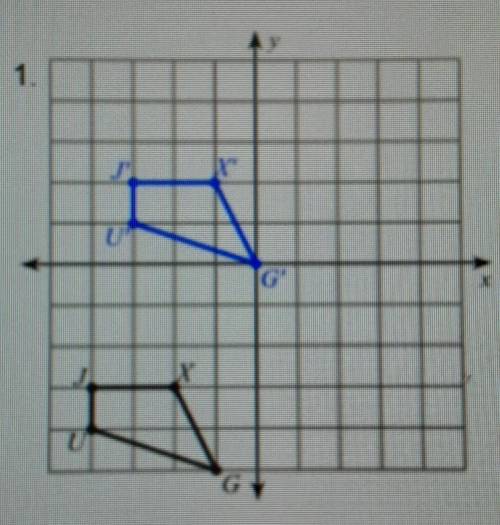What rule would result in the displayed transformation?
A: Rule: (x, y)=>(-x, y)
B: Rule:...

Mathematics, 16.09.2021 04:30 dbzafgtkiap9wyrl
What rule would result in the displayed transformation?
A: Rule: (x, y)=>(-x, y)
B: Rule: (x, y)=>(x, y-2)
C: Rule: (x, y)=>(x+1,y+5)
D: Rule: (x, y)=>(x,-y)
E: Rule: (x, y)=>(-x-4,y)
F Rule: (x, y)=>(x,-y-2)


Answers: 3


Other questions on the subject: Mathematics


Mathematics, 21.06.2019 18:30, guillianaroberts
Water flows at a steady rate from a tap. its takes 40 seconds to fill a 4 litre watering can from the tap. the rate at which water flows from the tap is halved. complete: 4 litres into cm3
Answers: 3


Mathematics, 21.06.2019 19:30, vanessagallion
Evaluate 3(a + b + c)squared for a = 2, b = 3, and c = 4. a. 54 b. 243 c.729 add solution .
Answers: 1
You know the right answer?
Questions in other subjects:




Mathematics, 30.01.2020 22:46

Biology, 30.01.2020 22:46




English, 30.01.2020 22:46

Mathematics, 30.01.2020 22:46



